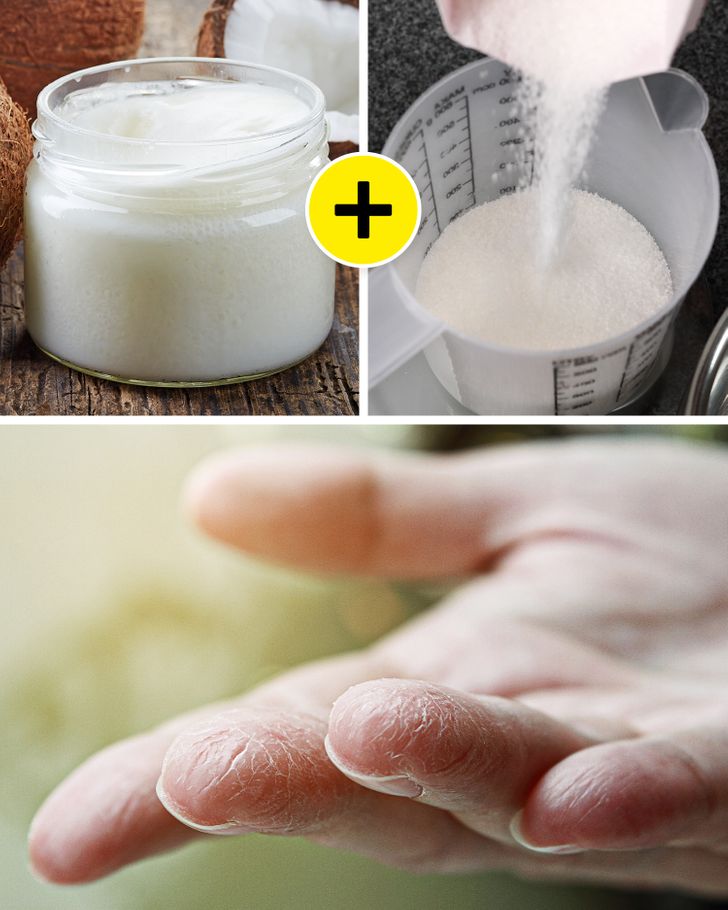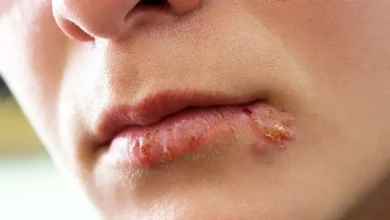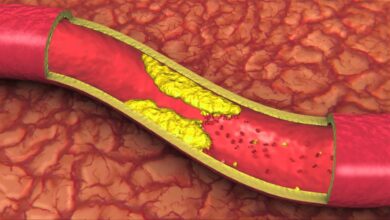2,048 3 minutes read
Tricks
Exfoliation helps get rid of dead skin cells, improves skin renewal, and makes creams absorb better into the skin which boosts their effect. For most people, it’s enough to exfoliate 1-2 times a week. If you notice skin redness, itching, or irritation after exfoliation or if your skin is already too inflamed, be gentle and let your skin heal first before incorporating this procedure into your routine.
What to do: You can make a scrub at home. Take 2 tsp of coconut oil and mix it with 2 tbsp of sugar. Apply this mixture onto your skin, massage for a minute, and rinse it off with water. You can also mix sugar with any moisturizing oil of your choice, like jojoba or grapeseed oil, and add essential oils or some vitamin E.
Try moisturizing hand soaks.
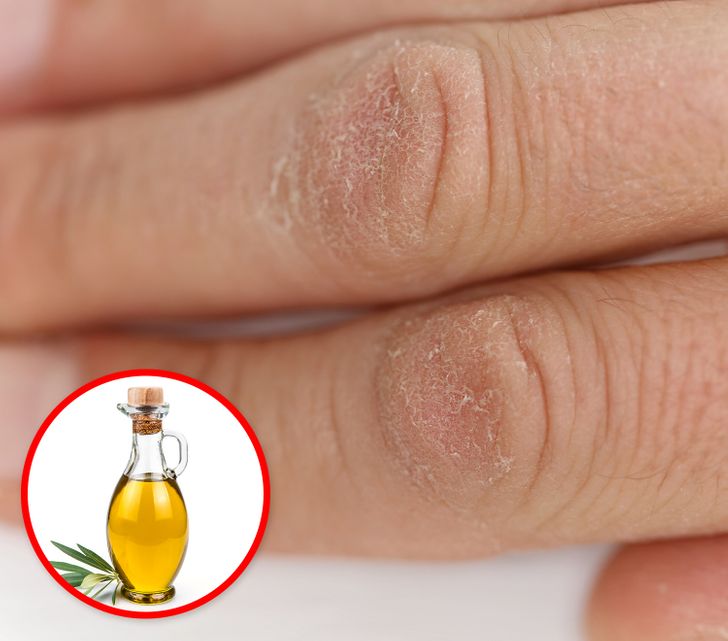
Hand soaking is another intensive treatment that can help relieve dryness and make your skin more hydrated. Choose a natural moisturizer, pat your hands nearly dry after the bath, and apply it to your skin.
What to do: Take a cup of powdered oats and 3 tbsp of olive oil. Put all the ingredients in a basin filled with warm water and mix them. Soak your hands in this mixture for 10 minutes. Olive oil has a moisturizing effect thanks to vitamin E and it also protects your skin from infection. Oats soften the skin and help keep it hydrated.
Pay attention to how you wash your hands.
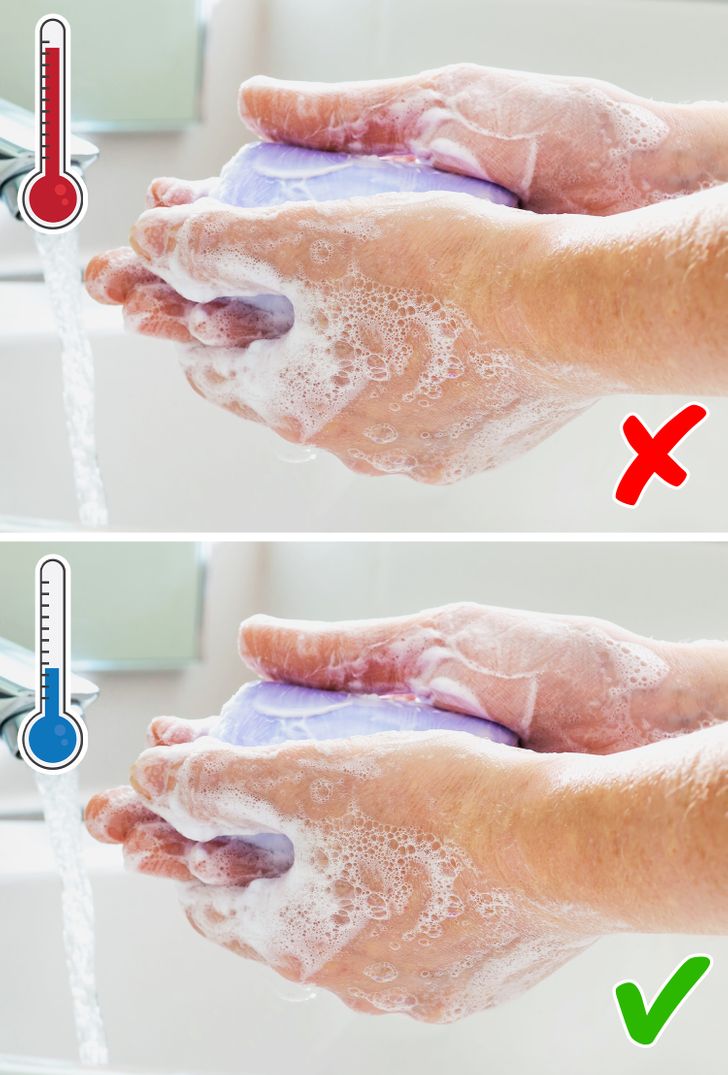
Washing your hands too often may destroy a protective barrier of your skin, causing dryness and irritation. And products with the wrong pH levels and improper washing techniques only contribute to the skin damage which can make the skin appear flaky.
What to do: Avoid washing your hands with hot water because it just dries out your skin and isn’t more effective against microbes than lukewarm or cold water. It’s better to choose moisturizing liquid soap and avoid soap bars since their high pH levels may cause skin irritation. When you dry your hands, don’t apply too much pressure: just pat them until they’re dry.

